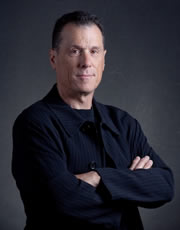 Over the weekend, four of our graduate students presented their work to a very appreciative group of residents at the Capitol Lakes Retirement Community in Madison. Erica Herrera, Jessica Merchant, Matthew Mauk and Leigh Garcia each explained their process, their background and their creative engagement with ideas and concepts in the context of community outreach; each artist’s work resonated with the audience in different and often very moving ways. Of course, there was no way to know who was in the audience, beyond what we might (incorrectly) assume about people living in a retirement home. However, as the conversation went on, it became clear that many of the audience members were retired professors, some had taught art, others did research in the sciences and humanities. Many had travelled extensively and were politically active; they were us in the not-too-distant future.
Over the weekend, four of our graduate students presented their work to a very appreciative group of residents at the Capitol Lakes Retirement Community in Madison. Erica Herrera, Jessica Merchant, Matthew Mauk and Leigh Garcia each explained their process, their background and their creative engagement with ideas and concepts in the context of community outreach; each artist’s work resonated with the audience in different and often very moving ways. Of course, there was no way to know who was in the audience, beyond what we might (incorrectly) assume about people living in a retirement home. However, as the conversation went on, it became clear that many of the audience members were retired professors, some had taught art, others did research in the sciences and humanities. Many had travelled extensively and were politically active; they were us in the not-too-distant future.
When we think about an audience or a public, we often create an image that is more of a reflection of ourselves than a reflection of the world; standing at a distance from the event, there seemed to be no visible connection between the group of younger graduate students and the guests in the room. What became clear as each artist presented their work and answered questions, was that the group had a collective life experience that is often invisible or overlooked. When we speak about community, we often overlook the possibilities in the very definition of the word; community can be created with activism and outreach and art can be a catalyst for reaching audiences that are simply waiting for us to show up.
I had the honor to speak about the UW Art Department and about art in general after Erica, Jessica, Matt and Leigh presented their work. What I found myself so moved by was how articulate and committed our students are. As I commented on each presentation, I was able to note salient concerns that they all shared about identity, ethics, materiality and citizenship. There was a sense of authenticity in the work and further in the way that the work was presented; each student responded gracefully to questions from the audience and offered sincere and thoughtful comments in response to the questions they received. In the end, there was a wonderful transaction that took place in the room and art was the catalyst, both for an intellectual conversation and for the free-flow of ideas across generations. I left feeling very proud of our students.
Best,
Douglas Rosenberg
Chair, Art Department
